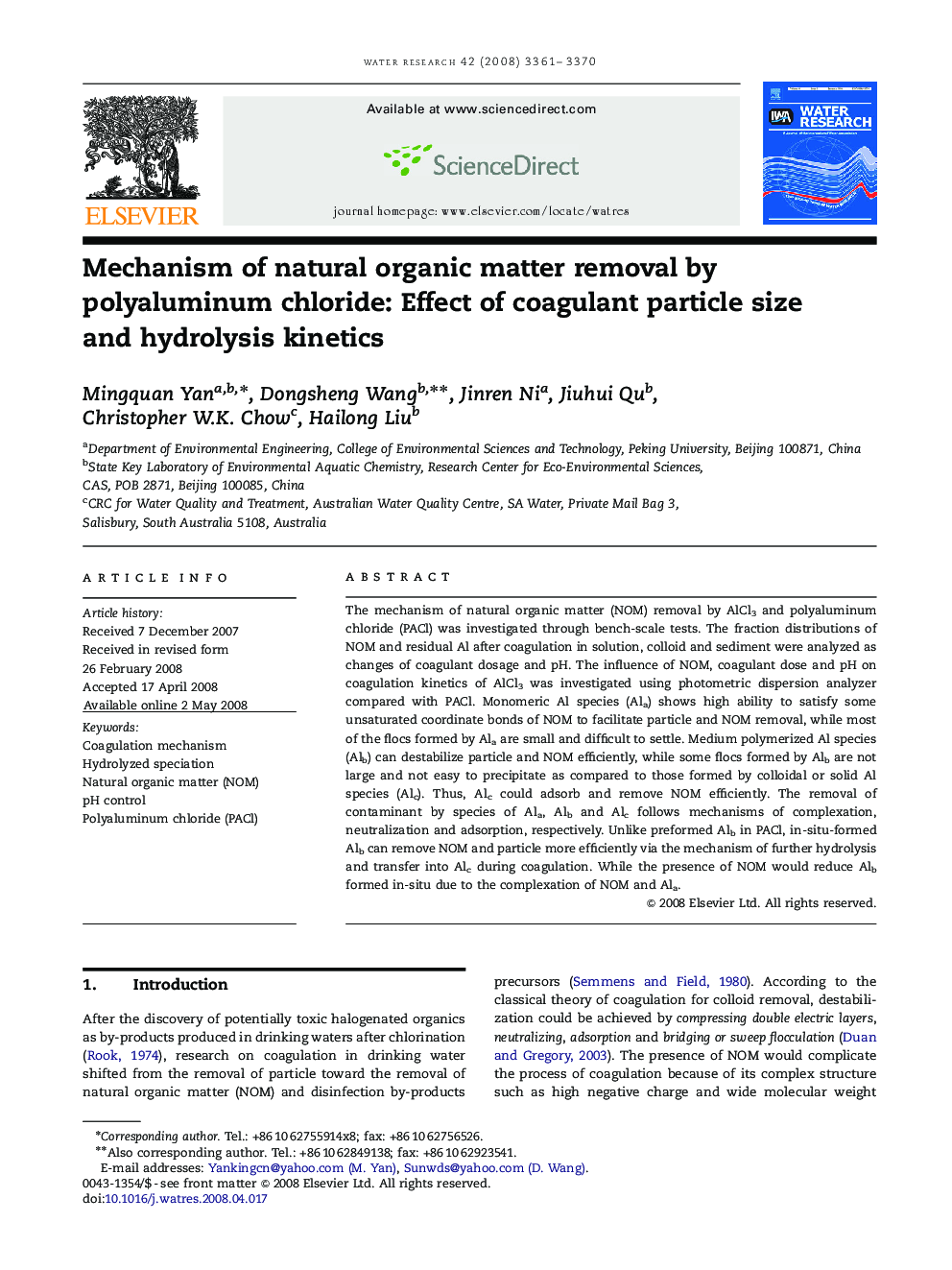| Article ID | Journal | Published Year | Pages | File Type |
|---|---|---|---|---|
| 4485469 | Water Research | 2008 | 10 Pages |
The mechanism of natural organic matter (NOM) removal by AlCl3 and polyaluminum chloride (PACl) was investigated through bench-scale tests. The fraction distributions of NOM and residual Al after coagulation in solution, colloid and sediment were analyzed as changes of coagulant dosage and pH. The influence of NOM, coagulant dose and pH on coagulation kinetics of AlCl3 was investigated using photometric dispersion analyzer compared with PACl. Monomeric Al species (Ala) shows high ability to satisfy some unsaturated coordinate bonds of NOM to facilitate particle and NOM removal, while most of the flocs formed by Ala are small and difficult to settle. Medium polymerized Al species (Alb) can destabilize particle and NOM efficiently, while some flocs formed by Alb are not large and not easy to precipitate as compared to those formed by colloidal or solid Al species (Alc). Thus, Alc could adsorb and remove NOM efficiently. The removal of contaminant by species of Ala, Alb and Alc follows mechanisms of complexation, neutralization and adsorption, respectively. Unlike preformed Alb in PACl, in-situ-formed Alb can remove NOM and particle more efficiently via the mechanism of further hydrolysis and transfer into Alc during coagulation. While the presence of NOM would reduce Alb formed in-situ due to the complexation of NOM and Ala.
